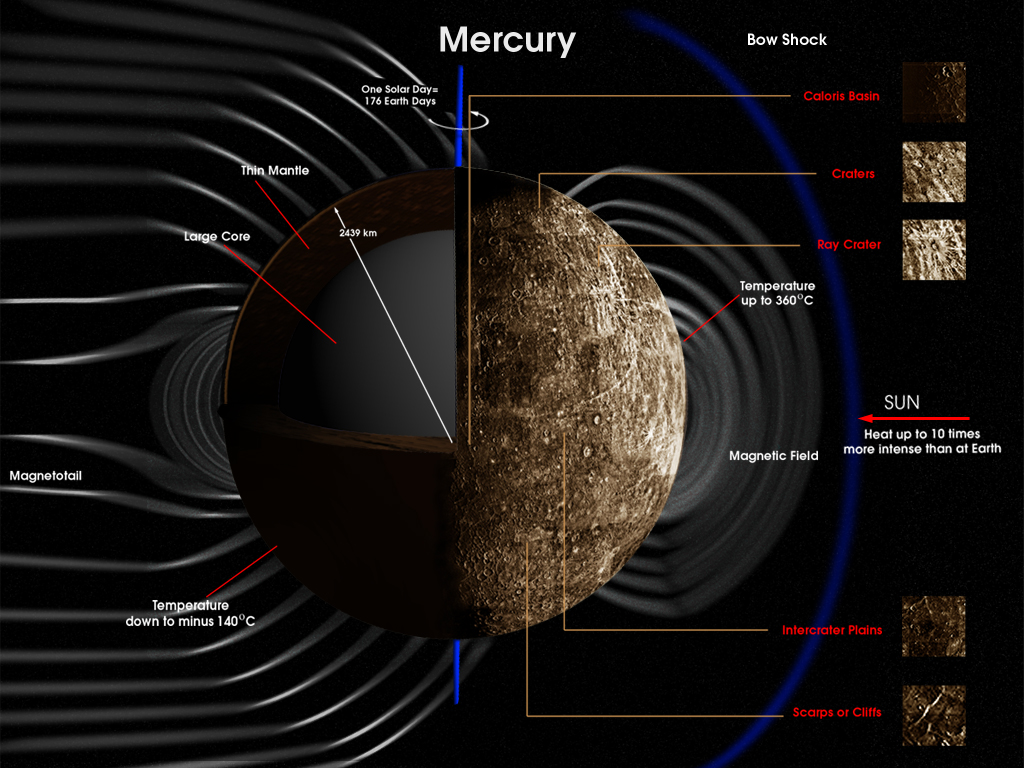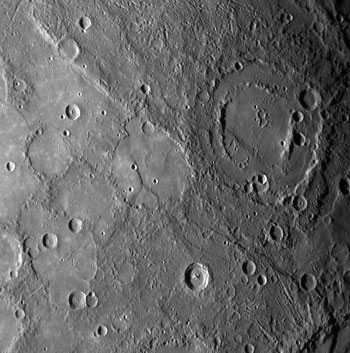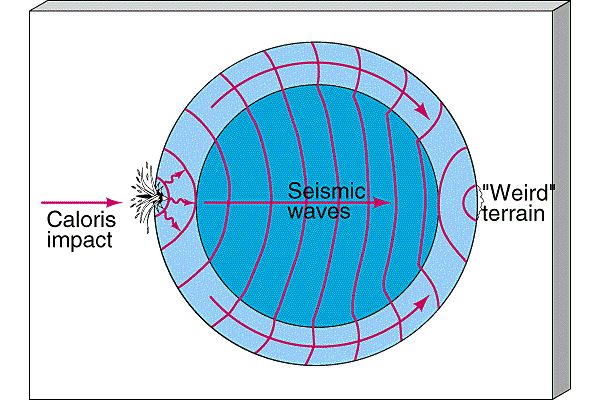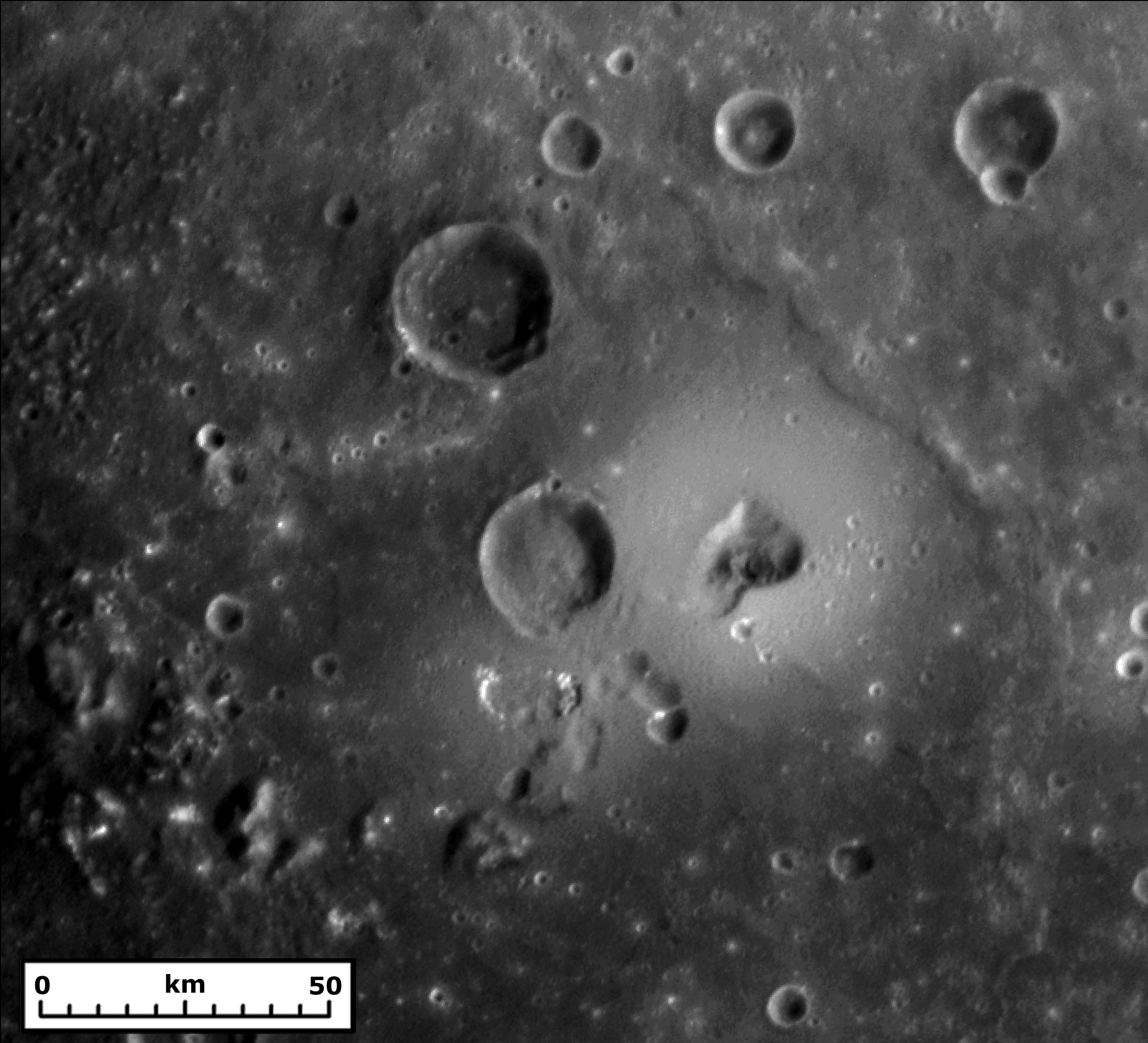The Planet Mercury

In general, Mercury is not a particularly interesting object in the solar system
and has not been well studied. The only spacecraft mission to Mercury occured more
than 30 years ago in the form of Mariner 10. From that mission, the following
attributes of Mercury have been constructed.
Note however, that the
Messenger Mission is just now commencing and has returned some new and suprising
data. That data will be discussed at the end.
The overall geological and structural features of Mercury are the following:
- Its density is 5.4 g/cc meaning that it must have a relatively large
nickel-iron core. The core is estimated to occupy 42% of the volume of the planet
(on the Earth, our core occuppies 17% of our volume)
- This nickel iron-core creates a weak magnetic field. The core is surrounded by
a substance similar to the Earth's mantle.
- There is no atmosphere because Mercury has insufficient gravitational field to
hold onto what would be a very hot atmosphere. As a result, surface daytime temperatures
can reach to 450 degrees centigrade.
- Mercury may have been approximately twice as massive when it initially formed but,
like the mechanism that formed the Earth's moon, Mercury was likely struck by a very
large planetisimal which blasted away 1/2 of this mass.
- The surface of Mercury is heavily cratered.

- The Caloris Basin, the largest
preserved impact on any planetary surface (crater diameter = 1300 km!), is an example of bombardment by large objects,
such as that which formed the lunar maria.

- This impact was so large that seismic disturbances were transmitted completely
thorugh the planet producing a jumbled terrain opposite of the impact:

- There are significant plains on Mercury with one plain being less heavily cratered
(and therefore younger) than the other plain. These plains appear to be lava flows.
- There are also long, linear folds on the surface which are thought to represent
a relatively rapid cooling and contraction of the Protoplanet Mercury.
- Recent radar mapping observations have shown that in the deepest craters near the
poles, where the surface is never exposed to direct sunlight, there appears to be deposits
of water ice. The depth of this ice is just a few meters and the total ice content is about
10,000 times less than the Antarctic ice sheet of Earth
New Views of Mercury From Messenger








